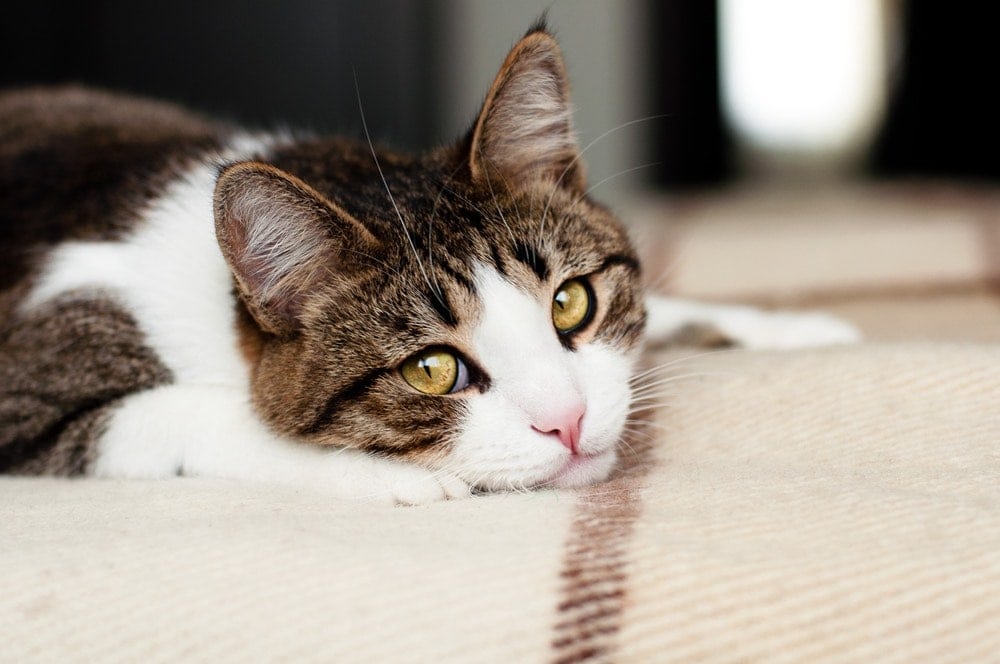How to Keep Cat Claws Dull – Top Tips for Maintaining Your Cat’s Nails
By Kit Copson
Updated on
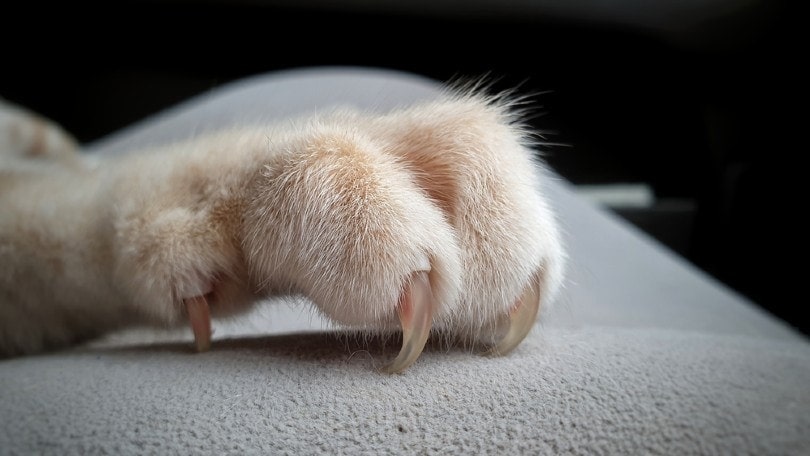
As much as we love our furry family members, that love sometimes comes at a cost. On occasion, that cost is, unfortunately, a brand-new sofa, armchair, or any other furniture your cat deems too tantalizingly scratchable to ignore. Sometimes, it is us they are digging their claws into!
Cats scratch for several reasons: to sharpen their claws and shed the outer husk, to stretch, play, hone their climbing skills, and to mark their territory. Though destructive, scratching isn’t a display of poor behavior. It more often than not means that they are expressing normal, although not necessarily desirable behavior. You can review your cat’s claw-management regime to help reduce the impact.
So, what can we do to manage your cat’s claws and save your furniture? First, we’ll explain how to safely trim your cat’s claws. Then, we’ll take a look at some alternative claw management methods for cats.
 How to Safely Trim Your Cat’s Claws
How to Safely Trim Your Cat’s Claws
There are two possibilities when it comes to trimming your cat’s claws. The first is that your super chilled-out feline will happily accept trimming in exchange for some behind-the-ear scratches or a few treats. The second possibility is that your cat is, shall we say, somewhat less cooperative.
Trimming can be pretty stressful for some cats. They may act out their distress by biting, growling, struggling, scratching or all four. That’s why it’s so important to make the experience as safe and stress-free as possible for you both. Here’s how to trim your cat’s claws in a way that won’t hurt them.
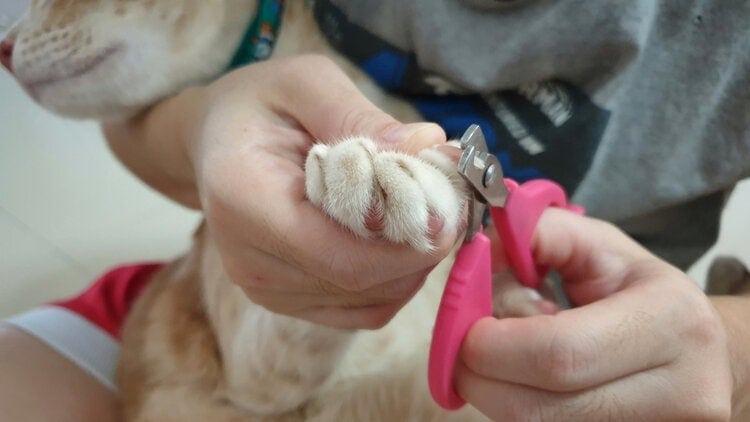
What You Need
- A pair of high-quality, sharp claw clippers
- A human assistant
Trimming your cat's nails isn't the easiest task in the world, but a well-designed set of clippers can make all the difference. Our Hepper Cat Nail Clipper Set features two sizes of clippers with easy-to-clean stainless steel blades and a built-in safety guard to prevent accidental cuts. These clippers are comfortable to hold, nicely designed to work at tricky angles, and even include a bonus hidden nail file and a convenient pouch!
Steps:
- If possible, have someone hold and reassure your cat. Get the cat as relaxed as possible by stroking and talking to them and offering treats.
- Gently squeeze the pad of the paw until the claw sticks out.
- Trim the sharp point of the claw only. Take care not to cut too far down—this can be very painful for cats. Stick to trimming only the tips. This way you should avoid the quick which is the part that will bleed if you cut it.
- If the cat shows signs of distress, release them immediately and try again later. Holding onto them and continuing at this point will only increase their stress and make them fearful of trimming in the future.
- If your cat reacts well, carry on with the other claws.
Claw Trimming: Tips
- Try to get your cat accustomed to trimming from an early age if possible.
- Regularly touch and stroke your cat’s paws and the pads of their feet. This helps get them used to the sensation of their paws being touched.
- Perform the procedure over several days if your cat is especially stressed out. Even if you just manage one claw per day, it’s a great start.
- Use high-quality claw clippers designed for pets.
- Stay as calm as you possibly can to avoid your nervousness rubbing off onto your cat.
- Use positive reinforcement—this could be in the form of treats, praise, back and ear scratches, catnip—whatever works for you and your cat!
- Let your cat get used to the clippers before using them. Leave them where they’re likely to see and sniff them. That way, they may not be so freaked out when you actually use them.
How Else Can I Keep My Cat’s Claws Dull?
First and foremost, please, please, please never consider declawing your cat. This is an unnecessary procedure and the after-effects can cause cats a great deal of pain and stress. The only reason for declawing a cat should be if it is medically necessary; due to a tumor, for example. It is illegal in many parts of the world and considered unethical.
Now that we’ve got that out of the way, here are some other things you can try.
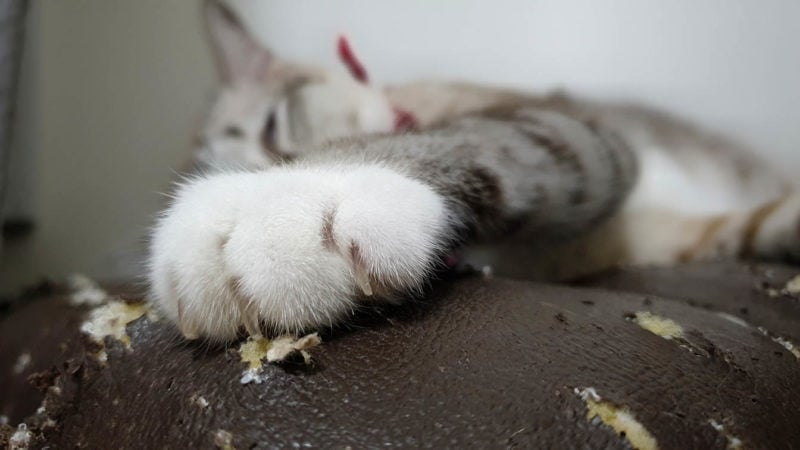
1. Provide a Scratching Post
All cats should have access to a scratching post, whether you trim their claws or not. A scratching post is usually made of sisal—a rough, tough material that allows a cat to get a good grip and really dig in. Scratching posts help distract cats from your furniture and also provides a crucial form of stimulation.
Another great thing about scratching posts is that there are endless kinds available! Does your cat like hidey-holes? You can easily find a large, multi-tiered cat tree that doubles up as a scratching post. Another popular choice is a scratching post with toys attached like a swinging ball for your cat to bat at. If you’re the crafty type, you could even have a go at making your own scratching post.
Try putting scratch posts next to your furniture to offer an alternative next time your cat gets the urge. Some cats prefer a horizontal surface to scratch and others a vertical surface so experiment with both.
2. Try Claw Caps
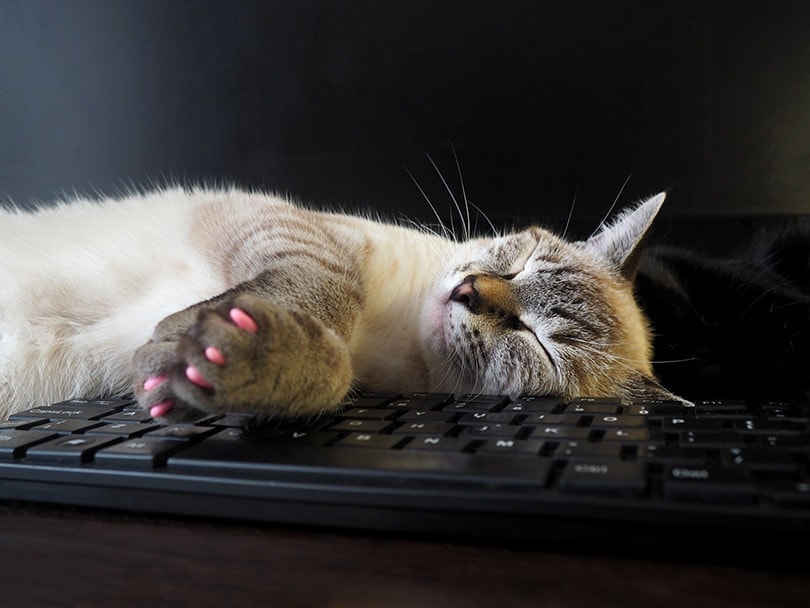
Think of claw caps as fake nails for cats. They’re soft, plastic, adhesive caps that you fit over your cat’s claws after trimming. In short, they form a protective barrier between the claws and your sofa (or you).
Claw caps could be the paw-fect solution for persistent cats that just won’t leave your furniture alone. You may also consider them for a cat that digs its claws into you, whether by kneading or scratching. They come in a range of colors and are perfectly safe for your cat. Just remember to wear gloves when you apply the adhesive to the caps to avoid a sticky situation for yourself.
Destructive Scratching: Prevention
As well as doing what you can to keep your cat’s claws dull, there are a few preventative steps you can take when you catch your cat in the act of scratching furniture.
1. Clean the Furniture
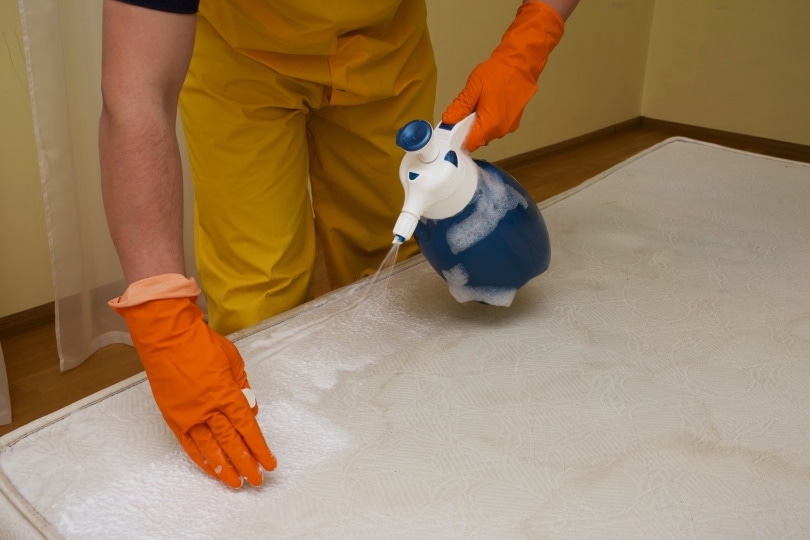
When your cat scratches an object, they deposit pheromones on it. This keeps them coming back to the same object as they have basically marked their territory on it. Try cleaning the furniture your cat has “chosen” to remove the pheromones, enzyme sprays are available for this.
Then, use a commercial cat deterrent and spray it on the problem area. Just bear in mind that these may not smell good to you, either. You can make your own cat deterrent with equal parts white vinegar, water, and liquid soap.
2. Keep Them Active
Ensure your cat has an outlet for their natural curiosity and exercise needs. Play with them daily and offer toys on rotation to keep them interested. Puzzle feeders are another great way to look after your cat’s mental health.
3. Use Scents

Certain scents have a repellent effect on cats. Examples are orange, citronella, banana, and rosemary. We don’t recommend using essential oils as deterrents, though—some essential oils are toxic and can even be fatal to cats.
Pheromone products are available to help your cat feel calm and secure in their environment, which may reduce their desire to scratch your furniture.
4. Make a Noise
Physically punishing your cat does more harm than good. If necessary, try making a sudden, loud sound when your cat reaches for the armchair. Try clapping or hissing.
There’s a fine line here between prevention and being threatening. When and if you try this method, don’t follow the sound with shouting or other noises. A short, sharp noise while remaining distant and calm is more likely to maintain its effectiveness in the future.
Final Thoughts
To summarize, the best way to keep your cat’s claws dull is to trim them regularly and provide a scratching post. Claw caps also help protect your furniture and skin from a scratch-happy feline and there are a few preventative measures well worth trying out.
If ever in doubt, talk to your vet or a professional cat groomer. These are the best people to support you with concerns about your cat’s claws or behavior.
We hope that now, you can start your new claw maintenance regime with confidence! Good luck and as always, thanks for stopping by!
See also:
Featured Image Credit: RJ22, Shutterstock

 How to Safely Trim Your Cat’s Claws
How to Safely Trim Your Cat’s Claws



